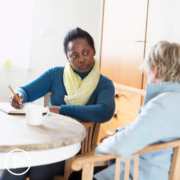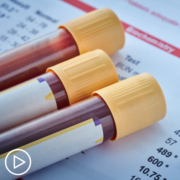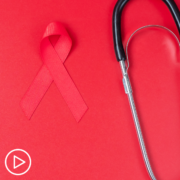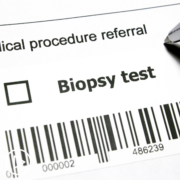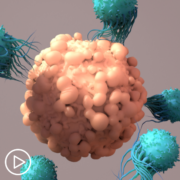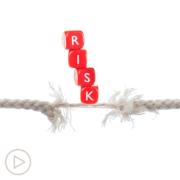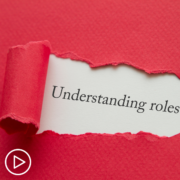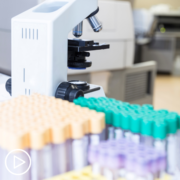Best Practices for Finding a Myeloma Specialist from Patient Empowerment Network on Vimeo.
Finding a myeloma specialist is imperative to ensure you’re receiving the best care possible. If you’re unsure where to look there are many resources at your disposable. Watch as myeloma patient advocates, Lisa and Sujata discuss their experiences with finding a myeloma specialist and share valuable resources.
Download Guide
Descargar Guía
See More from START HERE Myeloma
Related Programs:
Transcript:
Sujata Dutta:
Lisa what would be your experiences or maybe some of your thoughts around best practices around finding a myeloma specialist?
Lisa Hatfield:
Oh yeah. That’s also a really good question. So I live in Boise, Idaho, and most of the people in my support group here have stayed local, which is great, but a couple of people… In fact, at the time I was diagnosed, there was a gentleman who has myeloma, he was in Seattle having a stem cell transplant, he chose to go there because they have a much higher volume of… They do a much higher volume of stem cell transplants, and he just felt comfortable having all of that, not just the doctor, we have good doctors here, they have a huge support staff in Seattle where they do stem cell transplants.
So I asked the group, our group leaders, and then the gentleman who was in Seattle, why do people go somewhere else? Why would they do that? Because it’s not quite as comfortable leaving home for a period of time, and he talked a lot about how he felt just it was a second set of eyes to look at his case and he had some other complications with his myeloma. So for me, the best thing that I did is when I was thinking about going to see a specialist, which we did pretty quickly because my spine was quickly deteriorating, we end up calling MD Anderson, but after that, so we were assigned to a specialist.
She works at MD Anderson and only sees myeloma patients. After that, I wanted to have my stem cells collected somewhere else, and I ended up calling the International Myeloma Foundation their info line, and they actually can provide a list of specialists in your area or help connect you, especially in times of… Now that COVID is starting to settle down, but during COVID, a lot more specialists were doing Zoom calls or telemedicine visits, so I think that they have a really great… For patients who are looking for a specialist, which I assume you also highly recommend because you’re… You’re in a great area for specialist, I’m not. So I would recommend seeking a second opinion from… Not a second opinion, seeking taking a consultation from a specialist, because as you mentioned, myeloma is so nuanced, it is very complex and complicated.
Sujata Dutta:
Yeah and again, this highlights a difference. So I live in Minnesota, and I am blessed to be living here, being diagnosed with MM is not a good thing for anyone. But then being in a place where you have all the resources and the support that you need for dealing with something like myeloma is important, and I’m also in a system which is integrated. So obviously in Minnesota, close to Rochester Mayo. My Cancer Center, Frauenshuh Cancer Center is… It’s in St. Louis Park, and we have University of Minnesota, so these three institutes are integrated and patient information can be shared if needed. So when I was diagnosed, I actually did not have to go look for a hematologist or myeloma specialist.
My diagnosis was done by a hematologist in Frauenshuh cancer center, and then she sent my reports to Mayo to the Hematology Department for a second opinion. So for me, I think I’m so fortunate and they did all of this for me, I didn’t have to do that, and then I was anyways is in the care of an MM specialist, which I think is important. And again, reiterating what he just said is like they really know the disease well enough, like I’m not saying that our regular oncologist who don’t know that, but MM is so nuanced.
If you have the opportunity, I guess you should try and be associated with an mm-specialist, a hematologist, in my case, it was laid out to me on a platter, I should say. I was very fortunate, but for the… I know a lot of people may not have the opportunity to do that, but if you have that, you should definitely try and consider that because it’s quite an important conservation, I think.
Lisa Hatfield:
It is. I think you’re right, I know my current oncologist now, my local oncologist, he is awesome, he’s incredible, he’s a great physician, he was a great diagnostician. He’s really good. My husband, I both really like him. He also appreciates that I go somewhere else. And so that is the one thing I know I was terrified. Asking my doctors, what do you think about me seeing a myeloma specialist. I only had one little bit challenging experience when I told one of the doctors I had seen, I want to go to MD Anderson, and he said, Well, you’ll just be a number there and they don’t do much more than we would do here for that piece of my care, that’s probably true.
And even though we have really great care here and a great medical system, and I feel super fortunate with my cancer, my local cancer center there, all of the staff there is excellent. My oncologist is awesome. I still strongly believe that my course might have been different had I not seen a specialist because it is so unique and every patient is so different, and also specialist have access to some treatments that I did not have access to here locally.
So, I think that that’s super important. I’ll just mention really quick, since we’re talking about specialists, the IMF has their info line, which is… I had to write it down. The phone number is 1-800-452-CURE, which is 2873. So 1800-452-2873, and they can put people… They can direct people to a specialist, and then healthtree.org also has a list if people want to go on, maybe they’re in some dex accelerated insomnia, I guess some night they can go to Healthtree.org, and just… They can click on myeloma, there’s two tabs. Click on myeloma and I just scroll all the way down to patient resources rather than trying to navigate through that. And under patient resources, it says, Find a specialist.
So those are two resources the patients can have, I didn’t look for those, we just called MD Anderson, but I appreciate all your comments, and I think it’s great when people live near a center, I highly recommend going to the bigger center, especially if there’s a myeloma specialist my big fear was just offending my doctors here, and I think some people worry about that too, I’ve talked to other people in our support group.
Lisa Hatfield:
I don’t know if you have any suggestions for that, Sujata, if you think that… I feel strongly now about people seeing specialists, but at the time I was nervous about offending my doctors…
Sujata Dutta:
Yeah, and I can relate to that because you build this relationship, you really then you’re going to see them for however long, and so you really want that relationship to be maintained as it is in a good condition, so I totally understand why you would have hesitated even to think about, Oh my gosh, am I going to offend him her by saying, I want to actually see somebody, and I’m glad that your experience was good, meaning like your doctor was supportive of you actually seeing another one. I have also heard of other patients having to navigate difficult conversations, similar to what you share is like, why do you want to see somebody, like Do you not trust us or in that kind of conversations, which I think is a little bit difficult for the patient because we’re going through a lot anyways.
And I always believe like, this is not just for the patient. The entire family goes through the whole process of diagnosis, treatments, all and everything that ensues. So it’s really difficult for the patient and who’s already going through a lot, and I would really hope that the providers, the doctors understand the state of mind, and agree, if the patient wants to see somebody else to support them in that, in that decision-making, as I say, I have been really fortunate and I had a really good experience, but I have, as you said, None of others who have not had as a pleasant of an experience, I’ve also known of patients who do not have those…
Like you were able to go somewhere else, from Idaho to MD Anderson, I know of some people in some different states who do not have that kind of support, and in fact, they have pretty challenging systems, like there is a person in my support group who lives in Alaska, and for anything, any emergencies, they have to fly down to Seattle.
So, I can only imagine what that must be like to be in that situation where you’re going through so much and then you have to figure out the logistics and the tactical things about how do you reach from point A to point B and then start with whatever procedures so thank you so much for sharing those resources. I think they’re going to be really useful for folks that are listening to this call. Those resources are really, really important. I guess we can also say PEN also has some really amazing resources that folks can leverage as they navigate through this difficult journey.
Lisa Hatfield:
Yeah, I agree with that. And I was going to mention that, so people… When you talk about resources and accessing the resources that that is a big problem, we see that here, because we’re in a more considered more rural area, and so we draw from multiple rural states, our support group does, but also there’s the financial difficulty. So, I’ll just throw that out there too.
Those are two really good resources that I mentioned before, but if people want to reach out to me at PEN or send an email, that would be fine too. I can help direct them to decent resources or some place they could at least start looking for resources because it is really important for people to get that consult from a specialist, I think so… Yeah, I appreciate that.




